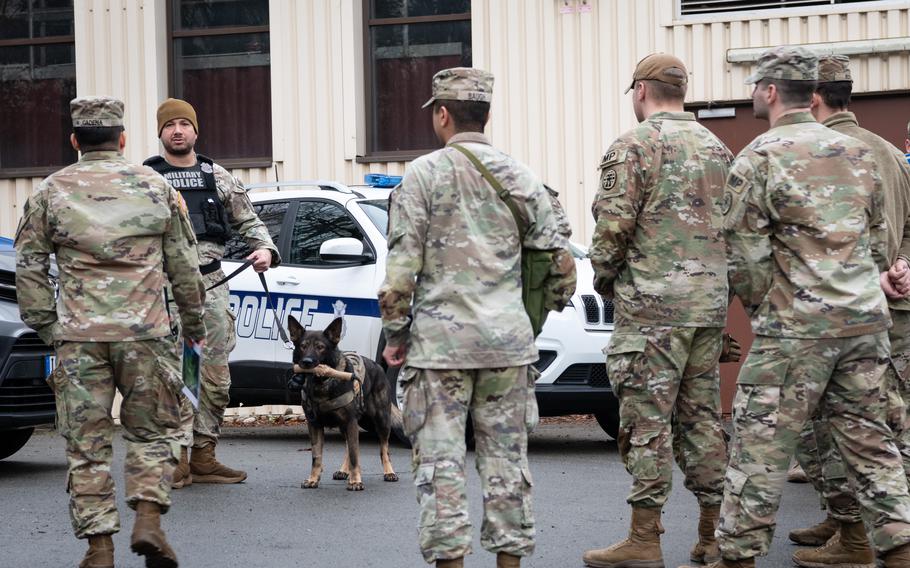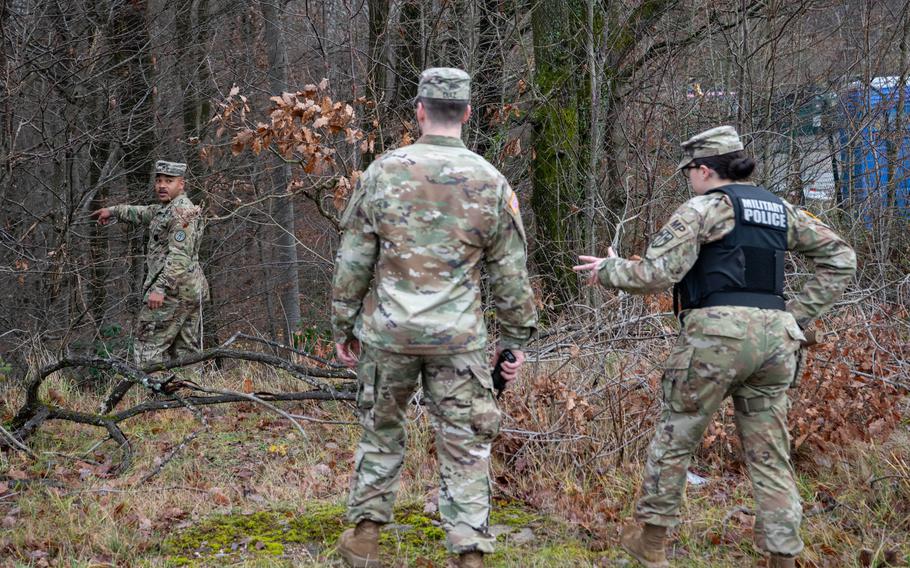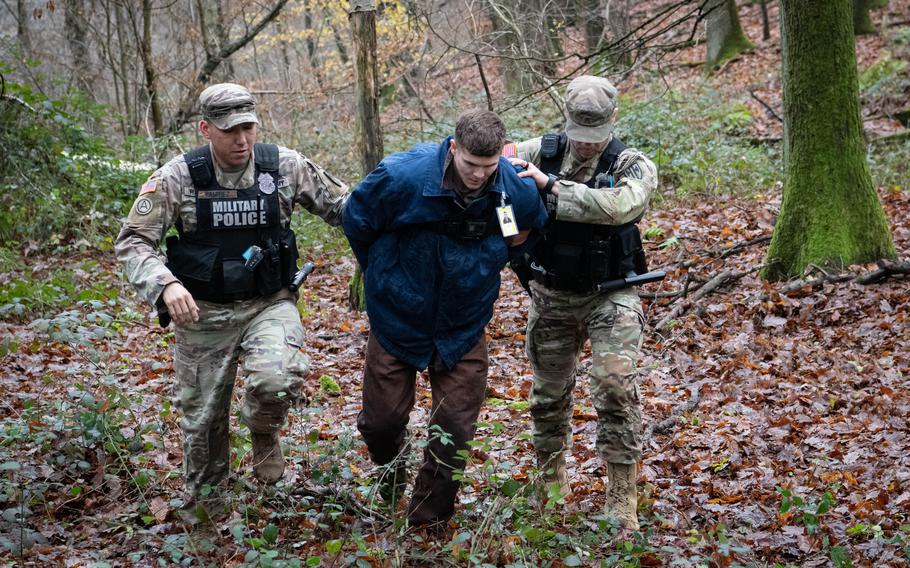SEMBACH KASERNE, Germany — The exercise Thursday at the U.S. military’s jail in Europe began with three soldiers in prisoner roles leaving their cells to do supervised landscaping work on the base grounds.
After several minutes, one of the inmates darted into the nearby woods. When the guards couldn’t catch him, emergency plans led to a dozen or so soldiers and a military working dog heading out in pursuit.
It took about three hours for the search teams to find the escapee, who was discovered hiding among tree branches. The prisoner attempted to attack the soldiers who found him, at which point the dog was released and brought the escapee down. Since it was an exercise, the prisoner was lucky enough to wear a dog bite protector.
The exercise was the largest known of its kind at this Army post in rural southwestern Germany.

Sgt. Fabio Santana, assigned to the 100th Military Working Dog Detachment, briefs troops during a missing prisoner exercise at Sembach Kaserne, Germany, Dec. 14, 2023. (Phillip Walter Wellman/Stars and Stripes)
“It represents one of the worst emergencies that could happen,” Staff Sgt. David Diaz, the plans and policies noncommissioned officer at the facility, said of a potential jailbreak.
An American prisoner escaping off-post and on the loose in a foreign country would be both a public safety and a diplomatic concern.
It’s critical for jail staff to know how to handle an escape, Diaz said.
Not all of the jail’s personnel were onsite or even informed of the exercise. But part of the drill involved summoning everyone who worked there for an emergency meeting, where search teams were formed and a plan was made.

Soldiers with the U.S. Army Correction Facility-Europe search for a missing prisoner during an exercise at Sembach Kaserne, Germany, Dec. 14, 2023. (Phillip Walter Wellman/Stars and Stripes)
The jail, officially titled the U.S. Army Correction Facility-Europe, is the only one on the Continent that holds inmates stationed in Europe and Africa from all services. Any U.S. service member awaiting trial on the two continents and those serving up to a year in confinement may be brought here.
Jail staff have conducted missing prisoner exercises by themselves before. This time, U.S. Army Garrison Rheinland-Pfalz’s emergency services directorate and the 18th Military Police Brigade joined the two dozen jail personnel. Two German police officers observed the exercise.
In a real jailbreak, German police would help secure the base perimeter, Army officials said.

Soldiers with the U.S. Army Correction Facility-Europe search for a missing prisoner during an exercise at Sembach Kaserne, Germany, Dec. 14, 2023. (Phillip Walter Wellman/Stars and Stripes)
Military jailbreaks remain exceedingly rare. Not a single prisoner in military custody has gone missing in the past decade, Army spokesman Bryce Dubee said.
But the exercise shows the Army is serious about keeping the areas it works in safe, and that it’s eager to improve, corrections facility commander Maj. Chad Pennington said.
“Overall, I’d say the exercise was very successful,” he said. “Anytime we have this kind of exercise, there’s going to be lessons learned.”
The military’s jail for Europe was first opened in 1945 in a stockade at Mannheimer Palace in Mannheim, Germany. In 1963, it moved to the Coleman Army Airfield to the north of the city, until that jail closed in 2014 as the current Sembach location opened.

An escaped prisoner is apprehended during an exercise at Sembach Kaserne, Germany, Dec. 14, 2023. (Phillip Walter Wellman/Stars and Stripes)